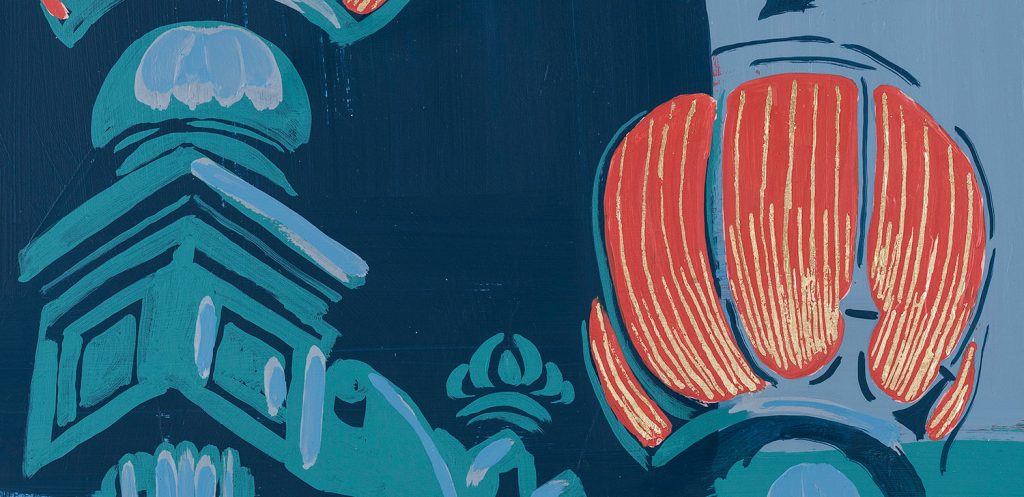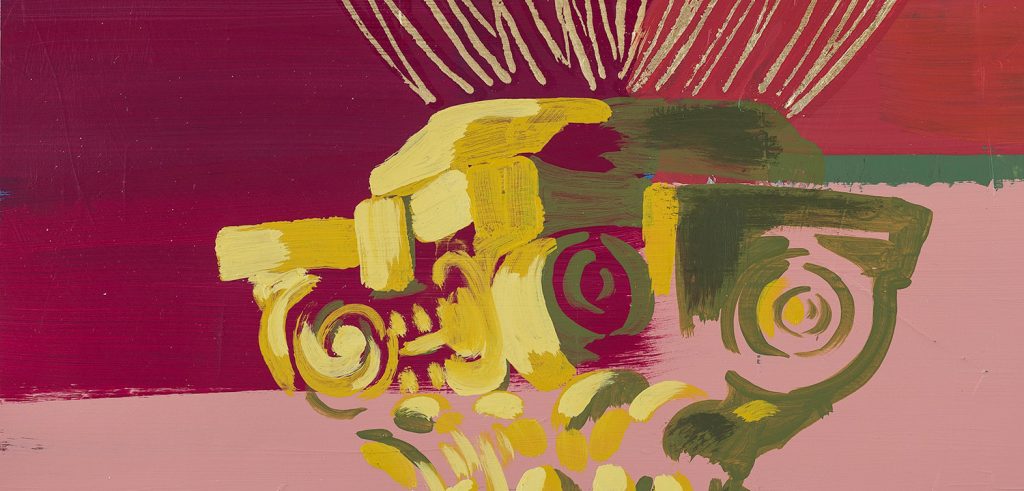Streetlights seem like such an unlikely subject for paintings. They’re so literal and functional. How could they be interesting? Why did I decide to create this ever expanding series of microcosm cityscape paintings? The whole story is oddly long, but let’s start at the beginning:
Maps. It all started with maps. Or perhaps more specifically, the Thomas Guide. (If you live in Los Angeles and don’t have a Thomas Guide, then you haven’t lived here very long. Go buy one. I don’t care if you have a cell phone to get around. Get a Thomas Guide. It’s an eye-opener if you want to get to know the city and it’s indispensable if you want to unplug from your devices.) So anyhow, there is this giant map, bound in book rings, and it sprawls and sprawls. It twists from one neighborhood to another, it veers across town on San Vincente, it straightens out as the skew of downtown becomes tidy in South LA. And it goes completely catawampus east of the river.

And so, growing up looking at a Thomas Guide in the back seat of a car in Los Angeles, I became familiar with the undulations of our civic form and how whimsey can meet order over and over again, all within the same body. Cities are living breathing organisms made of building blocks and the closer I looked at those building blocks, the smaller the building blocks became. Until one day, many years later, I was mostly looking at buildings: studying and painting buildings and their details. In that process, every pure, squared up, organized photograph I took of a building was rudely interrupted by a bit of whimsey: an errant streetlight. With no regard for the symmetry of a beautiful façade and painted too dark to really be legible in a photograph, these lights had minds of their own. They drove me nuts until I gave into them. It was like discovering that the boy who pulled your pigtails was really in love with you. And it became easy to return the sentiment.
Street lights are like lone characters in Tom Waits songs. They are the stories of the night. And when they’re old lights, they have a lot of stories. Sometimes they’re good looking and other times they’re better looking in the dark. Whether they’re beautifully flourished or peeling paint or simply functional, lights wash their surroundings in a glow. They emphasize the darkness beyond their reach. They help us understand and relate to our world (and each other) when it’s dark. They’ve stood witness to romance and tragedy. They’ve valiantly protected women on their walks home. They’ve propped up drunk buddies. They know the vulnerable human experience as well as any of us. They’ll listen to you spill your heart and they’ll lock your secrets away with the daylight.
So I paint them. I paint lamp posts with the intention of a portrait painter: to capture their spirit. I paint them with the intention of a fortune teller: to interpret their colorful auras. I paint them with the intention of a craftsman: to pay homage to craftsmen before me. I paint them with the intention of a storyteller. So take a long look. Close your eyes and see the sodium glow cast across your nighttime memories.
